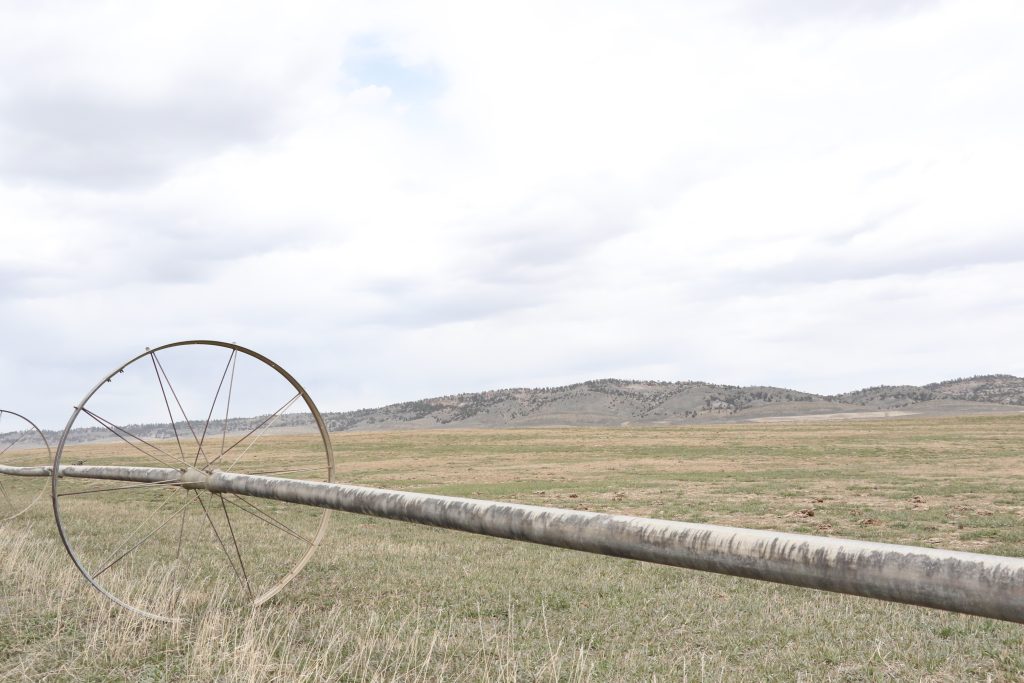Forecasting weather in the Rocky Mountain West: WWPC fall meeting provides climate outlook

Cheyenne – The Wyoming Weed and Pest Council (WWPC) Annual Fall Conference was held in Cheyenne Nov. 1-4 to further the council’s mission of preserving and protecting Wyoming’s agricultural lands and open spaces from invasive species and pests.
WWPC is comprised on 23 Weed and Pest Districts throughout the state of Wyoming, and works closely with the Wyoming Department of Agriculture and the University of Wyoming to utilize the most recent technology and research available to manage noxious weeds.
The WWPC Annual Fall Conference hosted a variety of committee meetings, educational breakout sessions and updates from researchers and land managers alike. The meeting’s keynote speaker, Don Day, Jr., of DayWeather, presented on the challenges meteorologists have in forecasting weather and climate conditions in the Rocky Mountain West, which greatly affects land management decisions.
Weather and climate drivers
Day shared the challenge of forecasting weather in the High Plains of the Rocky Mountain West is shaped by a few different drivers.
“In forecasting what we can expect for this winter into 2022, we have to consider the fact we are in the second year of a La Niña, the stratosphere is warming and there is a different sea surface temperature (SST) in the North Pacific,” he explained. “There is an uptick in solar activity, and there is high variability in this cycle. This is extremely noticeable because of the moisture the West Coast is experiencing. Patterns are identifiable and predictable.”
The Pacific Ocean, according to Day, is the major driver and key element to understanding –and forecasting – weather patterns.
“The Pacific Ocean is the largest object on the face of this earth,” Day said. “Out rain and snow come mostly from the Pacific. If we want to understand the climate and weather in Wyoming, we need to understand the Pacific Ocean.”
He continued, “When the SST of the Pacific is warm, there is more water vapor in the air, and the more water vapor there is, there is more water available for the western U.S. When the SST in the Pacific is cold, there is less water in the air, and this means drier conditions for western North America.”
This pattern affects the entirety of the globe. However, Day shared the most sensitive region to these weather changes is Wyoming and the Rocky Mountain Region.
Forecasted weather variability
Similar to last year’s weather, Day said he expects month-to-month alternating patterns throughout this winter.
“In 2021, there was a really cold May, and a really hot June, which is typical in a La Niña,” he noted. “The weather we have seen in 2020-21 is very similar to the weather this area experienced in 2010-11.”
Going back to recognizing patterns, Day said weather and climate patterns are most predictable along a sine wave. According to Day, this means cycles in this area are occurring around every 10 years. In an example, Day pointed out the drought conditions in Wyoming in 2001-02 are similar to the drought conditions that were present in 2012 and again this year.
“When we talk about drought, the realities are Wyoming is the fifth driest state, is far from water sources, has high wind and high elevation, which means high evaporation rates, and there are a lot of mountains between the state and the West Coast where water moves in from the Pacific Ocean,” Day said.
While the forecast calls for variability in temperature and precipitation in the coming months, Day shared the possibility of moving out of a La Niña cycle is possibly in late-spring of 2022.
Averi Hales is the editor of the Wyoming Livestock Roundup. Send comments on this article to roundup@wylr.net.





